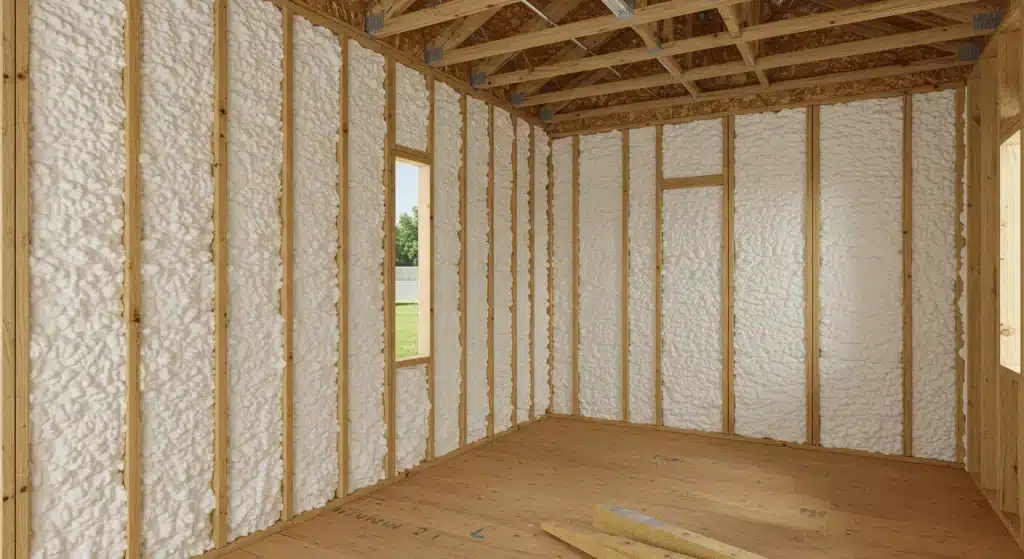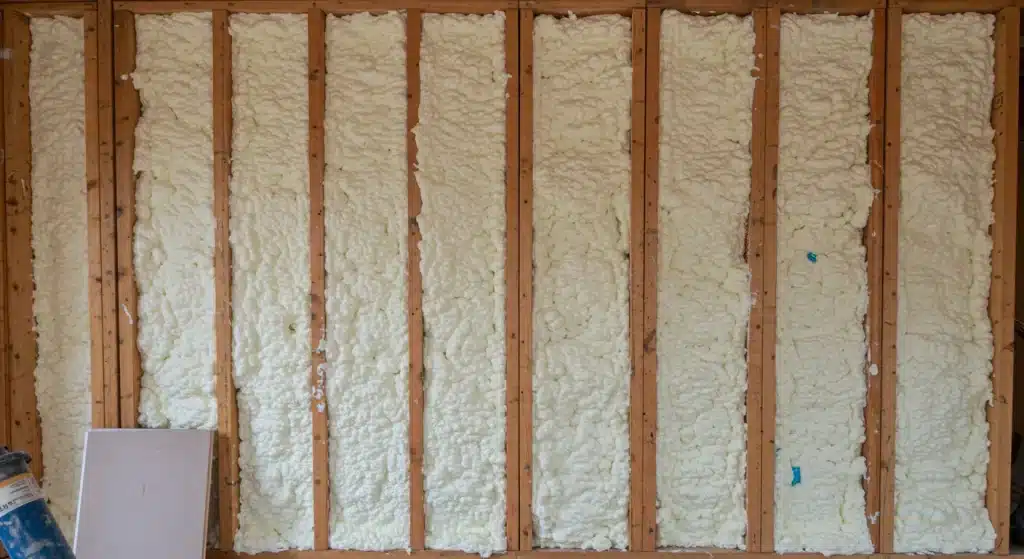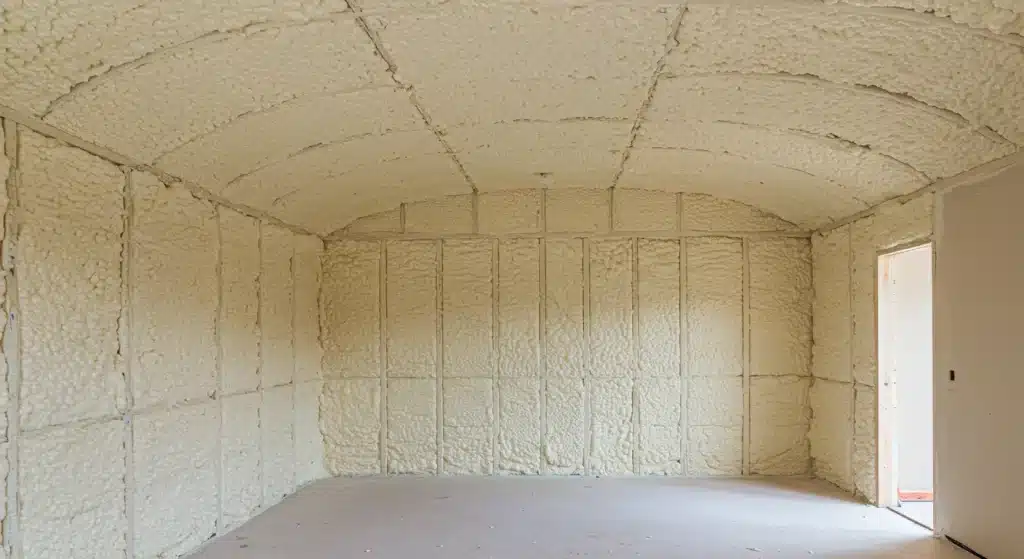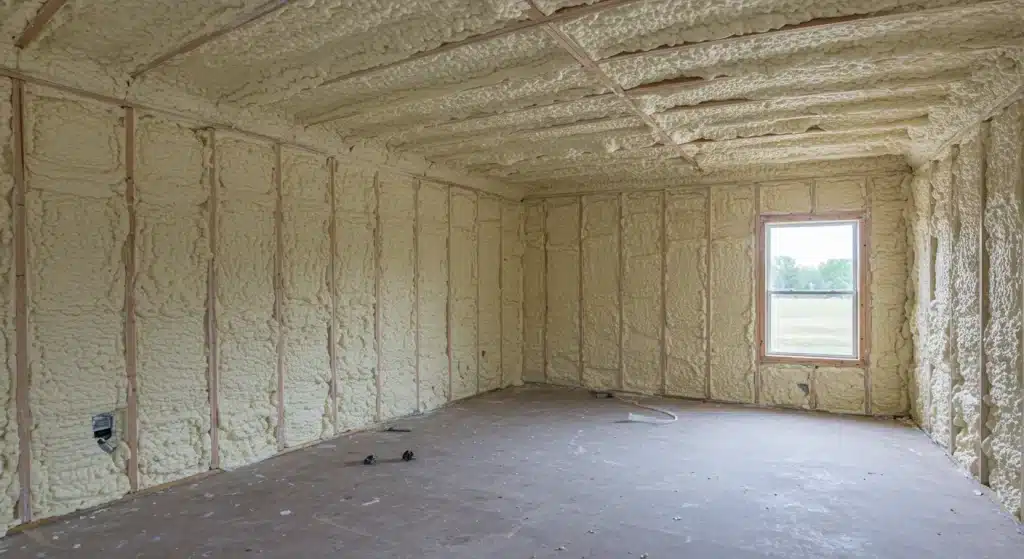Upgrading your home’s insulation is one of the most effective ways to improve its overall performance. The primary reasons to consider this project are significant energy savings, better year-round comfort, and a healthier indoor environment. A properly insulated home puts less strain on your heating and cooling systems, maintains more consistent temperatures, and can even block outdoor pollutants from entering. This article explains these benefits in detail, drawing on extensive experience in home performance and building science to provide clear, practical information.
The process of upgrading insulation is about more than just adding material; it’s about creating a complete thermal barrier for your home. When done correctly, it addresses energy loss, air leakage, and moisture control, leading to a more durable and valuable property.
1. Achieve Significant Energy Savings
The most immediate and noticeable benefit of new insulation is a reduction in energy bills. Your heating and cooling systems work hard to maintain a comfortable temperature, but if that conditioned air escapes through a poorly insulated attic, walls, or crawl space, the system has to run longer and harder. This wasted energy translates directly into higher utility costs.
Proper insulation slows the transfer of heat, keeping your home warmer in the winter and cooler in the summer. A report from the U.S. Environmental Protection Agency’s ENERGY STAR program suggests that homeowners can save an average of 15% on heating and cooling costs by air sealing their homes and adding insulation in attics, floors, and crawl spaces. For many families, this represents hundreds of dollars in savings each year.
2. Enhance Your Home’s Comfort
Do you have rooms that are always too hot in the summer or impossible to keep warm in the winter? Uneven temperatures are a classic sign of inadequate insulation. Heat naturally moves from warmer areas to cooler ones. In winter, it escapes your home; in summer, it seeps in from outside.
Upgraded insulation creates a consistent thermal envelope, preventing this unwanted heat transfer. The result is a home that maintains a stable temperature from room to room and floor to floor. This eliminates drafty spots and chilly surfaces, making your living spaces more comfortable and enjoyable throughout the year.
- Bonus Tip: Before adding new insulation, it’s a good idea to perform air sealing. This involves finding and sealing small cracks and gaps in your home’s exterior shell, particularly in the attic and basement. Combining air sealing with an insulation upgrade stops air leaks and maximizes thermal performance.
3. Improve Indoor Air Quality
What you can’t see can often hurt you. Dust, pollen, moisture, and outdoor pollutants can easily infiltrate a home through unsealed gaps and poorly insulated areas. This can aggravate allergies and respiratory issues. Certain types of insulation, particularly spray foam, create both a thermal barrier and an air barrier.
By sealing the home’s envelope, new insulation can drastically reduce the amount of airborne contaminants that enter. This leads to cleaner, healthier air for your family to breathe. It also helps control humidity levels, which is important for preventing the growth of mold and mildew.
4. Increase Your Property’s Value
An energy-efficient home is a highly attractive feature for potential buyers. When you upgrade your insulation, you’re not just making an improvement for your own comfort; you’re making a smart investment in your property. Homes with lower utility bills are more affordable to own and maintain, which is a powerful selling point.
While it can be difficult to pinpoint an exact dollar amount, many real estate professionals agree that energy-efficient upgrades increase a home’s market value. A study published by the Appraisal Journal found a clear correlation between energy-efficient features and higher property values, demonstrating that buyers are willing to pay more for a home that promises long-term savings.
5. Enjoy a Quieter Home
Noise from traffic, neighbors, and lawn equipment can disrupt the peace and quiet of your home. Many people don’t realize that insulation also has excellent sound-dampening properties. The same materials that block thermal energy can also absorb sound waves, creating a quieter indoor environment.
Different insulation materials have varying levels of effectiveness for sound control. This is often measured by a Sound Transmission Class (STC) rating, where a higher number indicates better soundproofing. Denser materials like spray foam and mineral wool are particularly effective at reducing noise transmission.
Sound Dampening Properties of Common Insulation Materials
| Insulation Type | Typical STC Rating (for a standard wall assembly) | Best For |
|---|---|---|
| Open-Cell Spray Foam | 37 – 39 | Excellent sound absorption, good for interior walls |
| Closed-Cell Spray Foam | 36 – 38 | Good sound absorption, adds structural strength |
| Mineral Wool Batts | 45 – 52 | Superior sound dampening, also fire resistant |
| Fiberglass Batts | 36 – 39 | Standard sound control, common and affordable |
| Blown-In Cellulose | 44 – 49 | Great for filling cavities, good sound blocker |
6. Control Moisture and Prevent Mold
Moisture can be a home’s worst enemy. When warm, humid indoor air comes into contact with a cold surface, condensation can form. This often happens inside wall cavities or attics that lack proper insulation. Over time, this moisture can lead to wood rot, structural damage, and the growth of mold and mildew.
Insulation keeps interior surfaces warmer, reducing the chance of condensation. When combined with a proper vapor barrier, it helps manage moisture levels throughout the home. Closed-cell spray foam, for example, is impermeable to water and can act as a vapor retarder, making it an excellent choice for basements, crawl spaces, and other areas prone to dampness.
7. Reduce Your Environmental Impact
Making your home more energy-efficient is also a great way to be more environmentally responsible. Residential homes are a major source of energy consumption. According to the U.S. Energy Information Administration, space heating and air conditioning account for a large portion of a home’s energy use.
By upgrading your insulation, you reduce your home’s energy demand. This means your HVAC system runs less, which in turn lowers your household’s consumption of electricity and natural gas. This reduces the overall demand on the power grid and lowers your carbon footprint, contributing to a healthier planet.
- Bonus Tip: When choosing insulation, look for products made with recycled content, such as cellulose (made from recycled paper) or fiberglass (which often contains recycled glass). This further minimizes the environmental impact of your upgrade.
Things to Consider Before Upgrading
Before starting an insulation project, it’s important to assess your specific needs. Here are a few key factors to think about:
- Your Climate Zone: The recommended R-value (a measure of thermal resistance) varies significantly by location; for instance, a home in Fresno has different insulation requirements than one in a colder climate.
- Existing Insulation: An energy auditor or insulation professional can inspect your current insulation to determine its type, depth, and condition. Sometimes you can add new insulation on top of old, but in other cases, the old material may need to be removed.
- Budget: Insulation costs vary widely by material. Fiberglass batts are generally the most affordable, while spray foam is a premium product with superior performance. Get quotes for different options to find what fits your budget.
- Project Scope: Are you insulating an entire attic, filling wall cavities, or focusing on a crawl space? The complexity of the job will influence both the cost and the choice of material.

FAQS
How long does insulation last?
The lifespan depends on the material. Fiberglass, cellulose, and mineral wool can last for decades if they remain dry and undisturbed. Spray foam insulation can last for the life of the home because it doesn’t settle or degrade over time.
What are the signs of bad insulation?
Common signs include high energy bills, fluctuating temperatures between rooms, drafts, and ice dams forming on your roof in the winter.
Can you have too much insulation?
It’s possible, but not in the way most people think. The main issue isn’t too much R-value but rather improper installation that blocks ventilation, leading to moisture problems, especially in attics. Proper installation is key.
Get a Professional Assessment
Evaluating your home’s insulation needs can be complex, so for a thorough assessment and expert recommendations, it’s best to consult with a professional. An expert can ensure your project delivers maximum energy savings and comfort for years to come. For homeowners in the Fresno area, companies like Supreme Spray Foam Fresno offer detailed inspections to help identify areas for improvement and select the right solutions. For more information or to schedule a consultation, you can contact their team at (559) 545-0800 or send an email to [email protected].
Sources
- ENERGY STAR – An infographic from the U.S. Environmental Protection Agency detailing the potential energy savings from sealing and insulating a home.
- The Appraisal Journal – An article discussing research on how energy-efficient features, like insulation, contribute to a home’s appraised value.
- U.S. Energy Information Administration – Data and analysis on energy consumption in U.S. homes, highlighting the energy used for heating and cooling.





